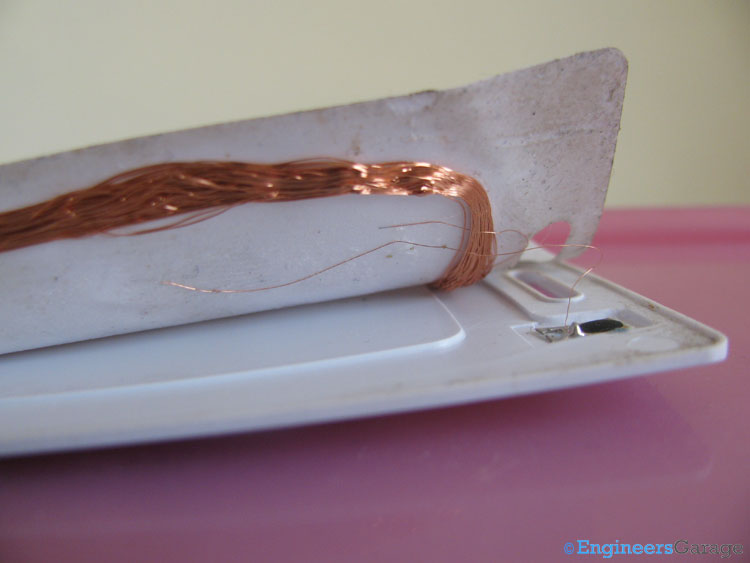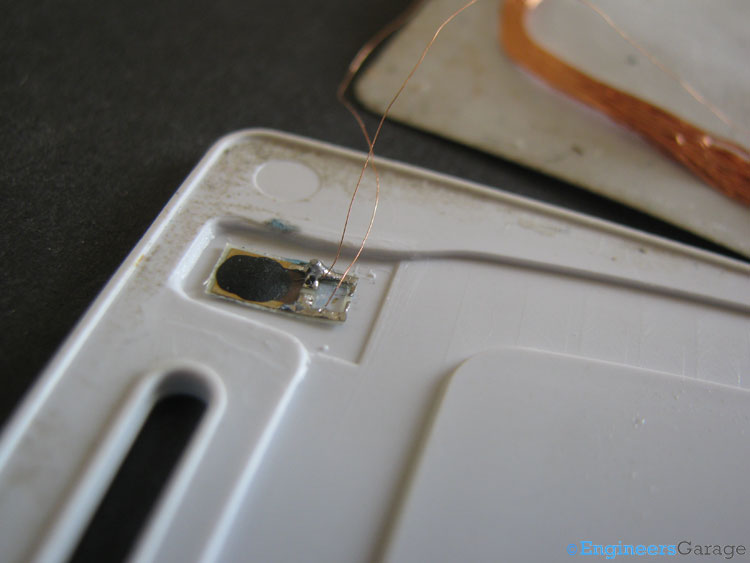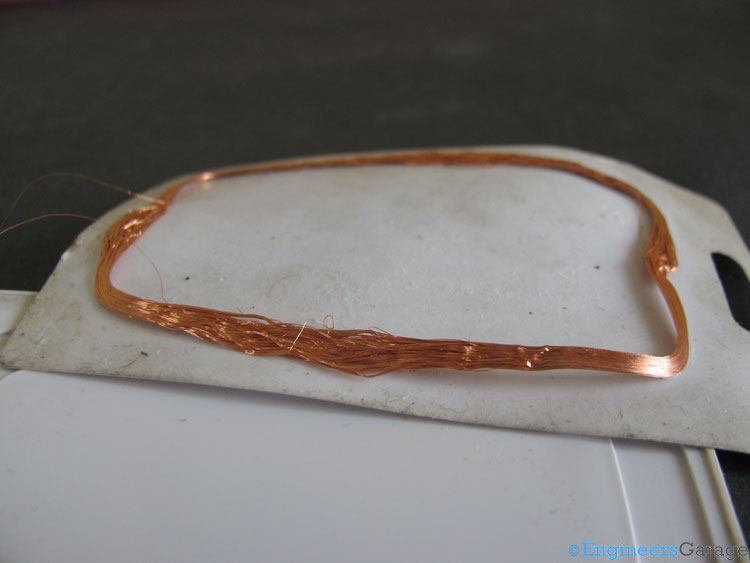RFID tag is a small device which stores and sends data to RFID reader. They are categorized in two types – active tag and passive tag. Active tags are those which contain an internal battery and do not require power from the reader. Typically active tags have a longer distance range than passive tags. Passive tags are smaller and lighter in size than the active tags. They do not contain an internal battery and thus depend on RFID reader for operating power and certainly have a low range limited up to few meters.

Fig. 1: Image Showing a Rectangular Passive RFID Tag
A rectangular passive RFID tag is shown in the above image. The passive tags are available in different shapes and sizes.

Fig. 2: Image Showing Copper Coil and Antenna in Backside Layer of RFID Tag
Removing the backside layer of the tag discloses the above look. A copper coil also known as the antenna is shown in the image above.
Chip and Antenna

Fig. 3: RFID Chip
Two wires from the coil are connected with a chip as shown in the above picture. This chip is the heart of the RFID tag.

Fig. 4: Image Showing Coiled Antenna
The antenna/coil is shown in the image above. The main function of the coil is to provide power to the chip as well as to work as an antenna to receive and transmit data.
Working

Fig. 5: RFID Microchip
The microchip stores the unique ID and incorporates the necessary logic circuitry for functioning of the tag. It has an internal EEPROM to store the unique ID.
Working
As we have already seen there are two important components of a RFID tag – A microchip and a coil (antenna). The antenna receives power and RF signals from the RFID reader and sends those signals to the chip. The chip receives those signals, computes them and sends back the data to RFID reader. We can figure out the precise working of a RFID tag through this diagram.

Fig. 6: Diagram Showing Working of RFID Chip
To recognize the identity of an RFID tag, RFID reader sends radio signals which is captured by the coil (working as antenna) for the tag. The coil receives these signals as alternating current and passes to the chip. The chip extracts both the power and the information from this alternating current. By communicating with the non volatile memory of the chip that stores unique id as well as other information, it sends back the required signal to the antenna which is then transmitted to the RFID reader. Check out the article on RFID for further details on RFID working and application.
Filed Under: Insight


Questions related to this article?
👉Ask and discuss on Electro-Tech-Online.com and EDAboard.com forums.
Tell Us What You Think!!
You must be logged in to post a comment.